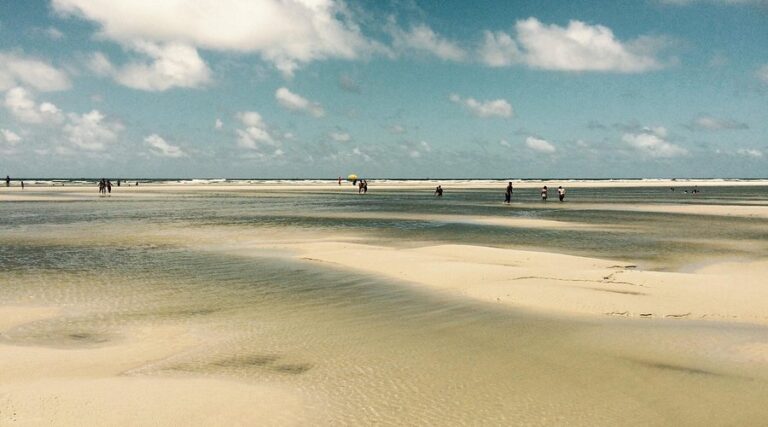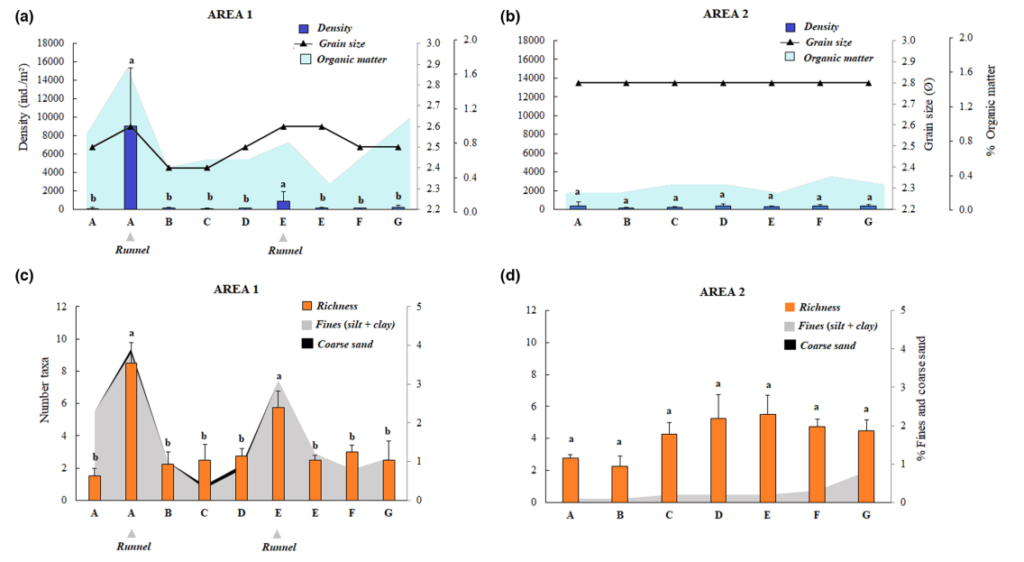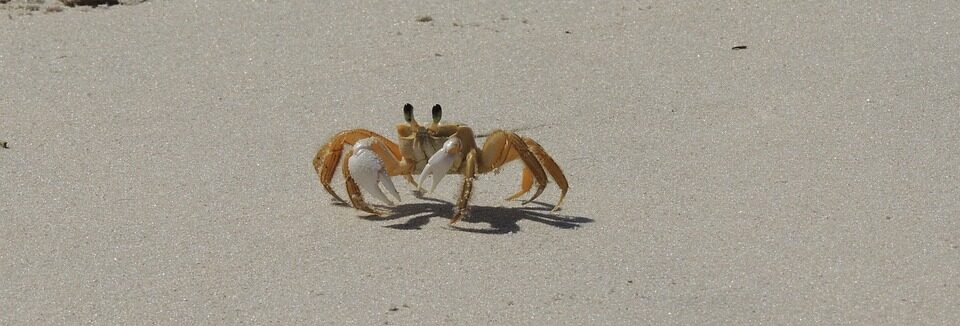Beaches are dynamic ecosystems teeming with life. The diversity of organisms present there depends on factors such as the circulation of organic matter and environmental variations, which influence the availability of resources and spaces for different species. The relationship between water and sand is fundamental to the maintenance of this coastal fauna, and small changes in the structure of the beach can have major impacts on biodiversity. Have you ever noticed how some areas of the sand are wetter and full of life, while others are dry and almost devoid of movement? This is because each section of the beach offers different conditions for the living organisms.
An interesting example of the geological influence on beaches is the ridge-and-runnel system, formed by depressions parallel to the coast that accumulate water at low tide and serve as channels through which the tide rises. In addition to facilitating the entry of water, these channels create microhabitats that help keep organisms in the area and, at high tide, act as a shelter against stronger currents. Interesting, right?

Figure 1. Corvina Beach. Source: TripadVisor. Available at: https://www.tripadvisor.com.br/Attraction_Review-g1872644-d4057213-Reviews-Corvina_Beach-Salinopolis_State_of_Para. https://www.tripadvisor.com.br/Attraction_Review-g1872644-d4057213-Reviews-Corvina_Beach-Salinopolis_State_of_Para.
Despite the importance of this system, there are still few studies that analyze its role in the ecosystem. Researchers from the Federal University of Pará (UFPA) studied this phenomenon at Corvina Beach, in Salinópolis (PA), and found that these depressions increase the diversity and quantity of marine organisms. This occurs due to the greater accumulation of organic matter by the sediment in these areas (such as microalgae, organic particles, and other debris), creating a rich environment that is more favorable for different species.
In the study, of the 42 species identified, 24 were associated with these channels! In addition, filter-feeding and predatory organisms were more frequent in these depressions than in the flat areas. The researchers observed that the levels of density and species richness increased as the levels of organic matter increased. In conclusion, beaches with these formations show a significant increase in the abundance and diversity of marine fauna.

Figure 2: Comparative graphs of species density and richness at the sampling sites. Area 1 has the ridge-and-runnel system, while area 2 does not. Source: Edma Cardoso. Available at: https://onlinelibrary.wiley.com/doi/10.1111/maec.12755 https://onlinelibrary.wiley.com/doi/10.1111/maec.12755
Anthropogenic changes, such as landfills and pollution, can compromise these microhabitats and affect coastal organisms. Understanding how these ecosystems work is essential for protecting them! The OCA defends investment in research and conservation measures as an important tool for maintaining these environments!
Did you know how important this system is? How about taking a closer look the next time you're at the beach?

Figure 3: Siri on beach sand . Source: Pixabay . Available at: https://pixabay.com/pt/photos/caranguejo-siri-praia-areia-1125887/ https://pixabay.com/pt/photos/caranguejo-siri-praia-areia-1125887/
References
BAZZAZ, F. A. Plant species diversity in old-field successional ecosystems in southern Illinois. Ecology, v. 56, n. 2, p. 485-488, 1975.
CARDOSO, Edma Mayara Pereira; SANTOS, Thuareag Monteiro Trindade dos; AVIZ, Daiane; COSTA, Marcelo Petracco; ROSA-FILHO, José Santos; AMARAL, Antonia Cecília Zacagnini; BEASLEY, Colin R. Effects of the ridge-and-runnel system on macrofaunal spatial distribution on a macrotidal sandy beach in the Brazilian Amazon coast. Marine Ecology, [s.l.], v. 44, n. 4, e12755, ago. 2023.
SILVA, Ricardo J. da; DINIZ, Soraia; VAZ-DE-MELLO, Fernando Z. Heterogeneidade do habitat, riqueza e estrutura da assembléia de besouros rola-bostas (Scarabaeidae: Scarabaeinae) em áreas de cerrado na Chapada dos Parecis, MT.Neotropical Entomology, Londrina, v. 39, n. 6, p. 934-940, nov./dez. 2010.
TEWS, J.; Brose, U.; GRIMM, V.; TIELBORGUER, K.; WICHMANN, M. C.; SCHWAGER, M.; JELTSCH, F. Animal species diversity driven by habitat heterogeneity/diversity: the importance of keystone structures. Journal of Biogeography, v. 31, n. 1, p. 79-92, 2004.

